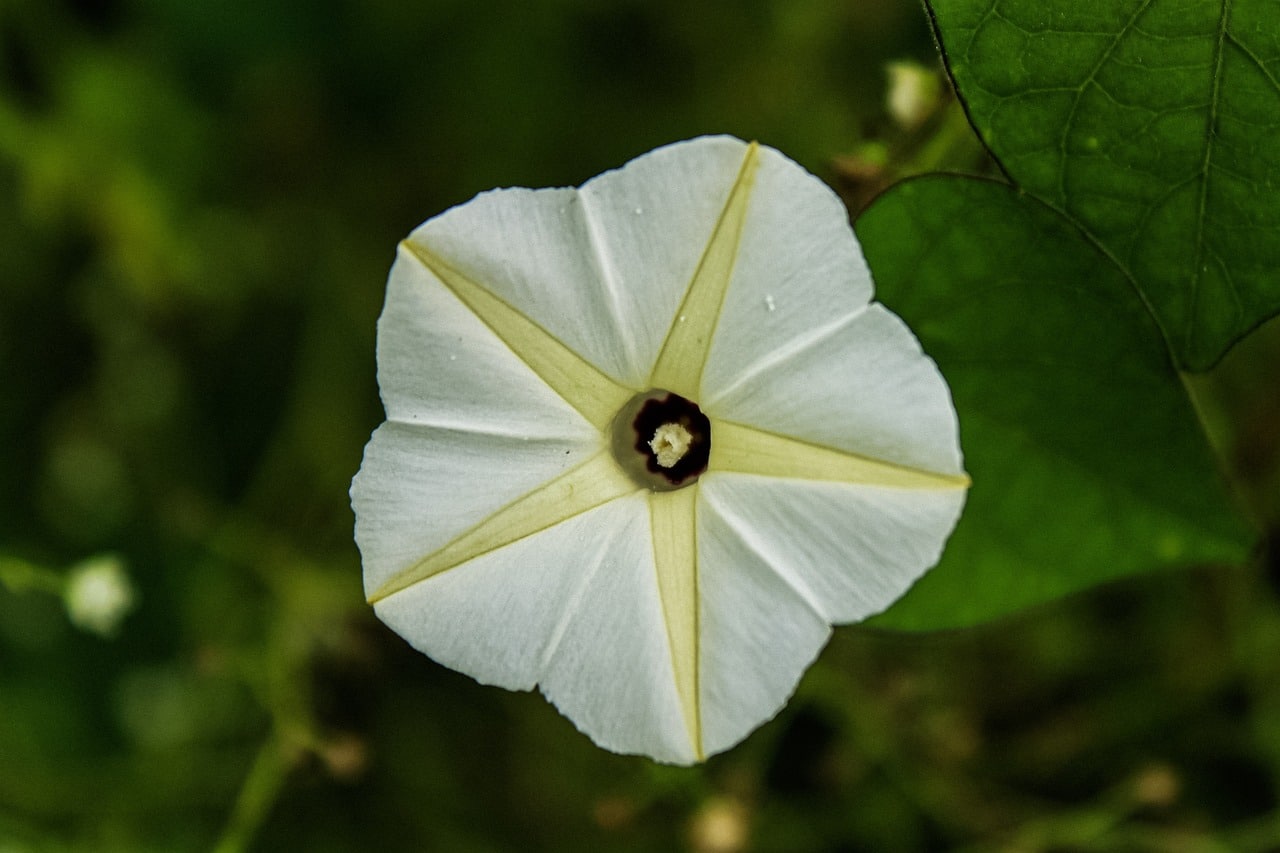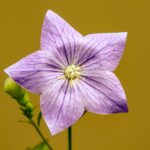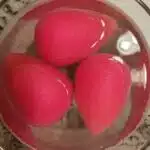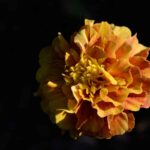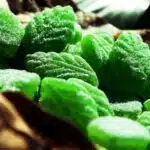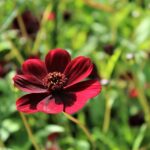Moonflowers, also known as night-blooming cereus, are nocturnal flowers that bloom in the dark, releasing a sweet fragrance that fills the air with magic. These beautiful flowers have captured the hearts of people all over the world, and have been used for various purposes, ranging from spiritual and medicinal to decorative and culinary. In this article, we will explore the meaning, properties, and uses of moonflowers in different contexts.
The Meaning of Moonflowers
Moonflowers have a rich symbolic meaning that varies across different cultures and traditions. In some cultures, they are seen as a symbol of mystery and beauty, while in others they represent spirituality and transformation. Here are some of the common meanings associated with moonflowers:
- Mystery and Beauty: Moonflowers have an ethereal beauty that is unmatched by any other flower. Their delicate white petals and soft fragrance create an aura of mystery and enchantment, making them a popular choice for weddings, special events, and decorations.
- Spirituality and Transformation: In many spiritual traditions, moonflowers are associated with transformation and rebirth. They are believed to represent the cycle of life, death, and rebirth, and are often used in rituals and ceremonies that mark significant life events such as births, deaths, and marriages.
- Femininity and Sensuality: Moonflowers have a delicate, feminine quality that is often associated with sensuality and romance. They are a popular choice for romantic occasions such as weddings, anniversaries, and Valentine’s Day, and are often used in perfumes and other beauty products.
The Properties of Moonflowers
Moonflowers are part of the cactus family and are scientifically known as Epiphyllum oxypetalum. They are native to Central and South America but have been cultivated all over the world for their beauty and medicinal properties. Here are some of the properties of moonflowers:
- Nocturnal Bloomers: Moonflowers bloom only at night and are closed during the day. They are pollinated by moths and other nocturnal insects that are attracted to their sweet fragrance.
- Medicinal Properties: Moonflowers have been used in traditional medicine for centuries to treat a variety of ailments, ranging from anxiety and insomnia to digestive problems and skin disorders. They contain compounds such as alkaloids and flavonoids that have been shown to have sedative, antispasmodic, and anti-inflammatory effects.
- Culinary Uses: Moonflowers are edible and have been used in traditional dishes in Central and South America. They are often used to flavor drinks and desserts and are also used as a natural food coloring.
The Uses of Moonflowers in Different Contexts
Moonflowers have been used for various purposes in different contexts, ranging from spiritual and medicinal to decorative and culinary. Here are some of the common uses of moonflowers:
Spiritual and Medicinal Uses
Moonflowers have been used in traditional medicine for centuries to treat various ailments. They contain compounds such as alkaloids and flavonoids that have been shown to have sedative, antispasmodic, and anti-inflammatory effects. Here are some of the common medicinal uses of moonflowers:
- Anxiety and Insomnia: Moonflowers have a sedative effect that can help relieve anxiety and insomnia. They are often used in traditional medicine to treat these conditions, and are also used in aromatherapy to promote relaxation and sleep.
- Digestive Problems: Moonflowers have antispasmodic and anti-inflammatory properties that can help relieve digestive problems such as bloating, cramps, and diarrhea. They are often used in traditional medicine to treat these conditions.
- Skin Disorders: Moonflowers have anti-inflammatory properties that can help relieve skin disorders such as acne, eczema, and psoriasis. They are often used in traditional medicine to treat these conditions and are also used in skin care products to soothe and heal the skin.
Moonflowers are also used in various spiritual practices and rituals. They are believed to have transformative and healing energy that can help connect people to their spiritual selves. Here are some of the common spiritual uses of moonflowers:
- Meditation and Prayer: Moonflowers are often used in meditation and prayer to help people connect with their spiritual selves. They are believed to have a calming and soothing effect that can help people focus and find inner peace.
- Rituals and Ceremonies: Moonflowers are used in various rituals and ceremonies that mark significant life events such as births, deaths, and marriages. They are often used to symbolize transformation and rebirth and are believed to have a powerful energy that can help people move through life’s transitions.
Decorative and Culinary Uses
Moonflowers are also used for decorative and culinary purposes. Their delicate beauty and sweet fragrance make them a popular choice for weddings, special events, and home décor. Here are some of the common decorative uses of moonflowers:
- Weddings and Special Events: Moonflowers are a popular choice for weddings and special events due to their delicate beauty and sweet fragrance. They are often used in bridal bouquets, centerpieces, and decorations, and are also used to symbolize love, beauty, and romance.
- Home Décor: Moonflowers are a popular choice for home décor due to their ethereal beauty and calming energy. They are often used in vases, wreaths, and other decorative items, and are also used to purify the air and promote relaxation.
Moonflowers are also edible and have been used in traditional dishes in Central and South America. They are often used to flavor drinks and desserts and are also used as a natural food coloring. Here are some of the common culinary uses of moonflowers:
- Flavoring Drinks and Desserts: Moonflowers are often used to flavor drinks and desserts such as teas, cocktails, and ice cream. They have a sweet, delicate flavor that pairs well with other ingredients.
- Natural Food Coloring: Moonflowers can be used as a natural food coloring to add a touch of color to dishes such as rice, pasta, and desserts. They have a pale yellow color that can add a subtle and natural hue to food.
How to Grow and Care for Moonflowers
Moonflowers are relatively easy to grow and care for and can be grown both indoors and outdoors. Here are some tips on how to grow and care for moonflowers:
- Planting: Moonflowers can be grown from seeds or cuttings. If planting from seeds, soak them in warm water for a few hours before planting to help soften the seed coat. Plant the seeds or cuttings in well-draining soil and place them in a sunny or partially shady location.
- Watering: Moonflowers prefer well-drained soil and moderate watering. Water them once a week, or when the soil feels dry to the touch.
- Fertilizing: Moonflowers do not require much fertilizer but can benefit from a balanced, all-purpose fertilizer once a month during the growing season.
- Pruning: Moonflowers can be pruned to control their growth and shape. Prune them in the spring after the last frost, and remove any dead or diseased branches.
- Pest Control: Moonflowers are relatively pest-resistant, but can be affected by mealybugs, scale insects, and spider mites. Use a mild soap and water solution or neem oil to control these pests.
Moonflower in Literature and Art
Moonflowers have been a popular subject in literature and art for centuries. They have been used as a symbol of beauty, femininity, and spirituality, and have been featured in various works of art and literature. Here are some examples of moonflowers in literature and art:
- Literature: Moonflowers have been mentioned in various works of literature, including poetry and novels. For example, in John Keats’ poem “Endymion,” the moonflower is used as a symbol of beauty and romance. In Gabriel Garcia Marquez’s novel “One Hundred Years of Solitude,” the moonflower is used as a symbol of transformation and rebirth.
- Art: Moonflowers have been featured in various works of art, including paintings, illustrations, and sculptures. For example, the French artist Henri Fantin-Latour painted a series of moonflower paintings in the late 19th century, which are now considered some of his most famous works.
Conclusion
Moonflowers are mysterious and beautiful flowers that have captured the hearts of people all over the world. They have been used for various purposes, ranging from spiritual and medicinal to decorative and culinary. Their delicate beauty and sweet fragrance make them a popular choice for weddings, special events, and home décor, while their medicinal properties have been used to treat various ailments for centuries. Growing and caring for moonflowers is relatively easy, and they can be grown both indoors and outdoors. Moonflowers have also been featured in various works of literature and art, and have played an important role in various myths and legends from around the world. Whether you’re looking to add a touch of beauty to your home or connect with your spiritual self, moonflowers are a great choice.

